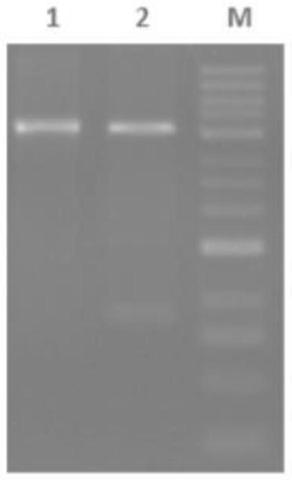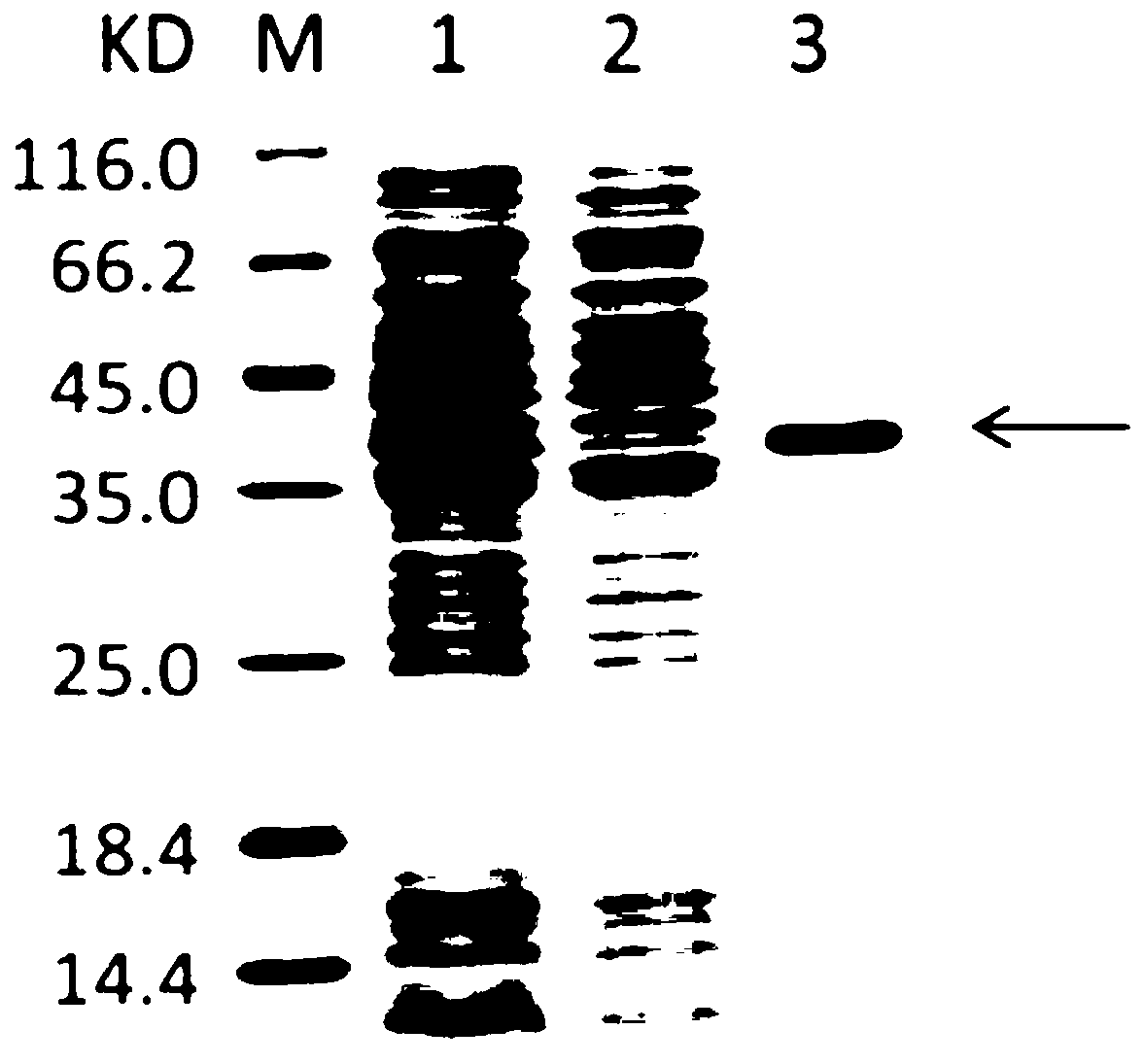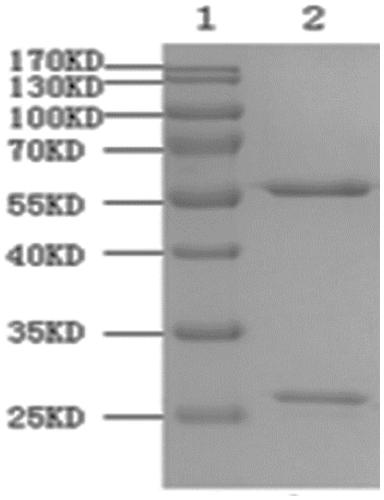Hybridoma cell strain AntiTput-13 and monoclonal antibody AntiTput-DP10 secreted thereby
A hybridoma cell line and monoclonal antibody technology, applied in the field of genetic engineering related to dust mite allergens
- Summary
- Abstract
- Description
- Claims
- Application Information
AI Technical Summary
Problems solved by technology
Method used
Image
Examples
Embodiment 1
[0030]Example 1 Prokaryotic expression and purification of Der p10 protein
[0031] 1. Primer Design
[0032] According to the tropomyosin (tropomyosin) gene sequence (accession number: AAT40866.1) of tyrophagous mite registered in Genbank, design PCR amplification primers, the sequence is as follows: upstream primer 5'-ATGAATCACAAAGTGCATCATCATCATCAT CATCATGGC -3', downstream primer 5'-CCG TCTAGA TTAATAACCGGTCAGTTCGGCAAA-3', the underline is the restriction site.
[0033] 2. Extraction and reverse transcription of total RNA from Tyrophagous mite
[0034] Total RNA was extracted from Tyrophagous mite by Trizol method as a template, and cDNA was synthesized by reverse transcription with random primers.
[0035] Trizol method for RNA extraction: pick 30 adults of tyrophagous mite under a microscope, add 0.5mL Trizol to mix, let stand at room temperature for 5min, add 0.1mL chloroform, shake vigorously for 15s, incubate at room temperature for 2-3min, 12000g, 4℃ Centrifuge f...
Embodiment 2
[0063] The preparation of embodiment 2 monoclonal antibody
[0064] 1. Mice Immunization
[0065] Four 6-week-old female SPF BALB / c female mice were immunized with affinity-purified prokaryotic recombinant Der p10 protein for 3 times with a two-week interval between each immunization. immunity.
[0066] One week after the second and third immunizations, blood was collected from the eyes of the mice, and the serum was separated (4°C, 10,000rpm, 20min). The antibody level was detected by indirect ELISA. The results are shown in Table 1. No. 3 mouse had the best titer and cell fusion Select mouse No. 3. Three days before the cell fusion, the SPF BALB / c mice No. 3 with good immune effect were boosted again, and each mouse was intraperitoneally injected with 50 μg immune antigen.
[0067]
[0068] Indirect ELISA method: coated with purified recombinant Der p10 protein antigen, 2ug / ml, 100uL / well, 4°C overnight; then washed 3 times with washing solution; blocked with 2% skim m...
Embodiment 3
[0079] Example 3 Identification of monoclonal antibodies
[0080] 1. Subclass identification of monoclonal antibodies
[0081] According to SBA Clonotyping TM System-HRP (Southern Biotech) Antibody Subclass Identification Kit Operating Instructions The monoclonal antibody obtained in Example 2 was used for subclass identification.
[0082] The results show that the heavy chain of the monoclonal antibody AntiTput-DP10 of the present invention is IgG1, and the light chain is Kappa chain. The identification results are shown in Table 3.
[0083] Table 3 Identification of monoclonal cell subtypes
[0084]
[0085] 2.Western blot identification test
[0086] 5 adult mite bodies of tyrophagous mite were crushed with a pestle, centrifuged and sedimented, and then subjected to SDS-PAGE electrophoresis, and then the protein was transferred to a nitrocellulose membrane by electrotransfer. The electrotransfer condition was 18V for 30min, and blocked with 5% skimmed milk powder Bl...
PUM
 Login to View More
Login to View More Abstract
Description
Claims
Application Information
 Login to View More
Login to View More - R&D
- Intellectual Property
- Life Sciences
- Materials
- Tech Scout
- Unparalleled Data Quality
- Higher Quality Content
- 60% Fewer Hallucinations
Browse by: Latest US Patents, China's latest patents, Technical Efficacy Thesaurus, Application Domain, Technology Topic, Popular Technical Reports.
© 2025 PatSnap. All rights reserved.Legal|Privacy policy|Modern Slavery Act Transparency Statement|Sitemap|About US| Contact US: help@patsnap.com



